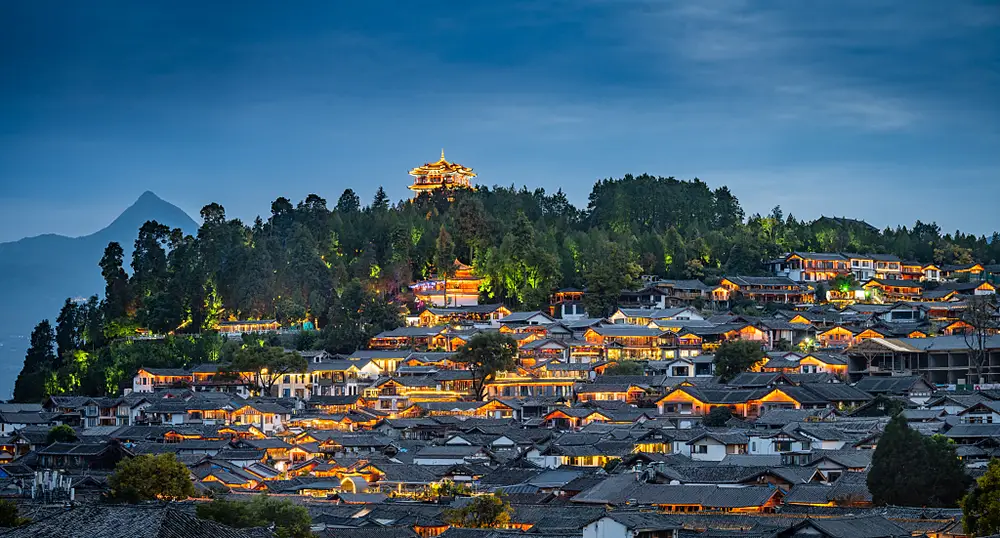
Located in Gucheng District, Lijiang City, Yunnan Province, Lijiang Ancient City (also known as Dayan Town) is situated in the middle of the Lijiang Basin. Founded in the late Song Dynasty and early Yuan Dynasty (late 13th century), it sits on the Yunnan-Guizhou Plateau at an altitude of over 2,400 meters, covering an area of 7.279 square kilometers.
Lijiang Ancient City is one of China's few well-preserved ethnic minority ancient cities, embodying the essence of Naxi culture and preserving the historical features formed since the Song and Yuan dynasties. The streets in the ancient city are built along mountains and rivers, paved with red breccia, and feature famous attractions such as Sifang Street, Mu's Residence, and Wufeng Tower.
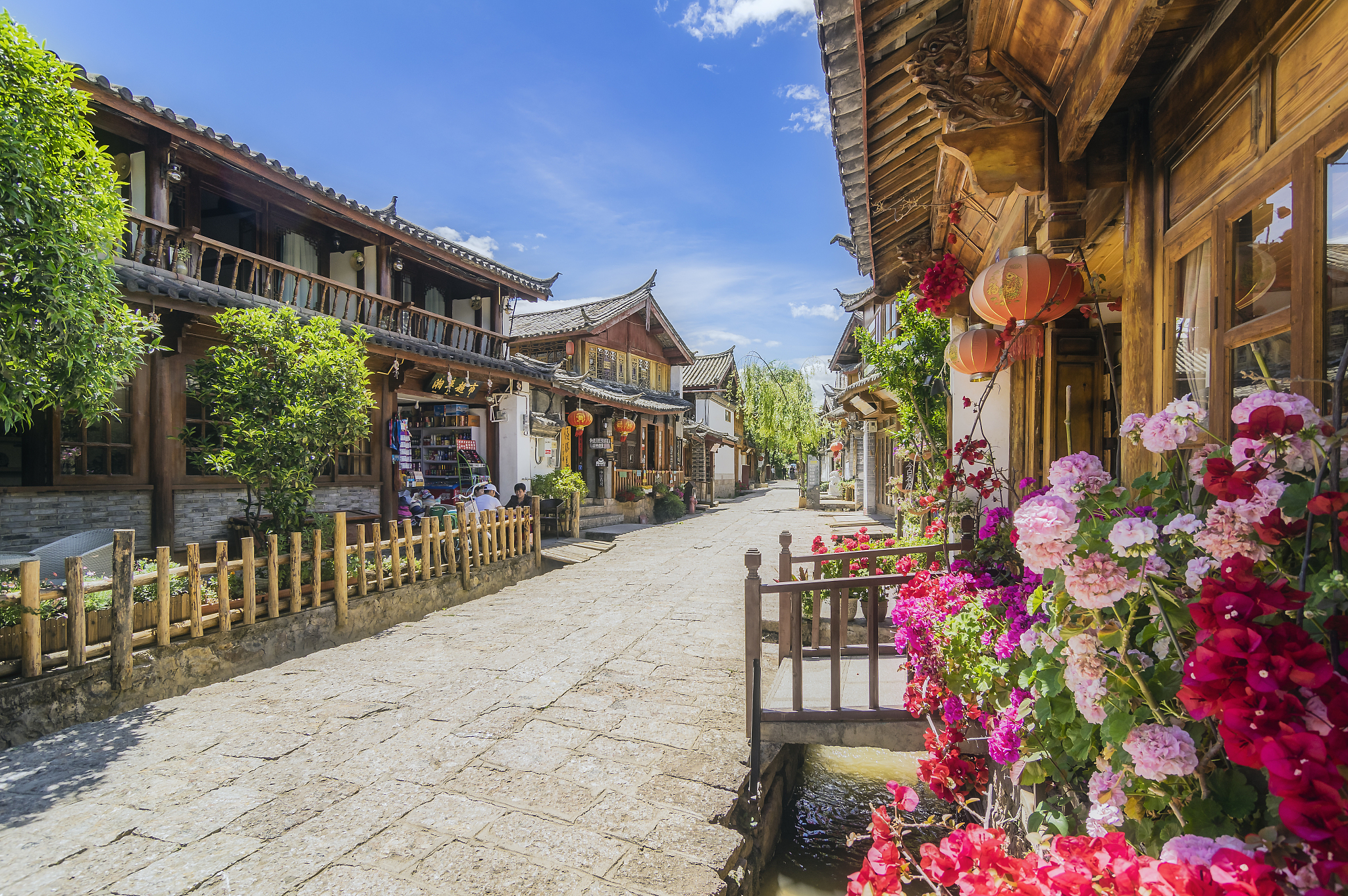
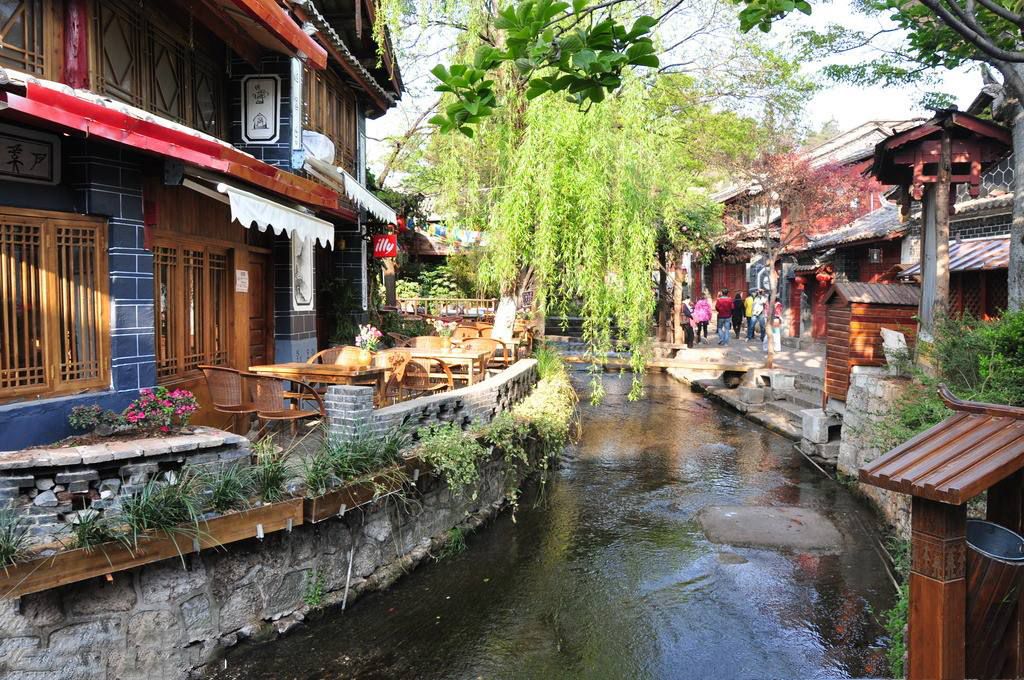
Lijiang Ancient City is world-famous for its unique water system and bridge network. The scene of "three rivers flowing through the city, water in every household, and willows in every house" has earned it the titles of "Plateau Gusu" and "Oriental Venice." The architecture of the ancient city combines styles from Han, Bai, Yi, Tibetan and other ethnic groups, forming a unique Naxi architectural characteristic.
In 1986, Lijiang Ancient City was listed as a Chinese Historical and Cultural City by the State Council. On December 4, 1997, it was inscribed on the UNESCO World Heritage List, becoming one of the first two ancient cities in China to receive the World Cultural Heritage title (the other being Pingyao Ancient City). In 2007, Lijiang Ancient City was rated as a national AAAAA-level tourist attraction.
Lijiang Ancient City was founded as a tribe established by the ancestors of the Mu clan, the leaders of the Naxi people, known as "Dayechang," becoming the political, economic, and cultural center of Lijiang.
The Mu clan chieftains of Lijiang carried out large-scale expansion of the ancient city, forming an urban layout centered around Sifang Street. The Mu's Residence complex was also basically completed during this period, becoming a symbol of Lijiang's political power.
Lijiang Ancient City continued to develop, becoming an important commercial hub in northwestern Yunnan. Han, Tibetan, Bai and other ethnic cultures blended here, forming a characteristic of multicultural coexistence.
During the Anti-Japanese War, Lijiang became an important rear base and international passage, and commercial activities in the ancient city became more prosperous. After 1949, the protection of the ancient city received attention, and the government took measures to protect its features.
Listed as a Chinese Historical and Cultural City in 1986, inscribed on the World Heritage List in 1997, and rated as a national 5A-level scenic spot in 2007. The ancient city seeks a balance between protection and development, becoming one of China's most influential cultural tourism destinations.
The water system of Lijiang Ancient City is one of its most unique features, known as "the blood of the ancient city," forming a complete and scientific water supply and drainage system:
Utilizing natural height differences to form three-level wells, used respectively for drinking, vegetable washing, and laundry, demonstrating the environmental wisdom of the Naxi people
The Yuhe River system is divided into three main streams (east, west, and middle) flowing through the city, then diverging to various streets, forming a network
There are over 300 bridges in the ancient city, diverse in form, including stone arch bridges, stone slab bridges, and covered bridges, each with its own characteristics
This pattern of "city existing by water, water existing with the city" not only solves the problem of residents' daily water use but also regulates climate and beautifies the environment, embodying the wisdom of the Naxi people in living harmoniously with nature.
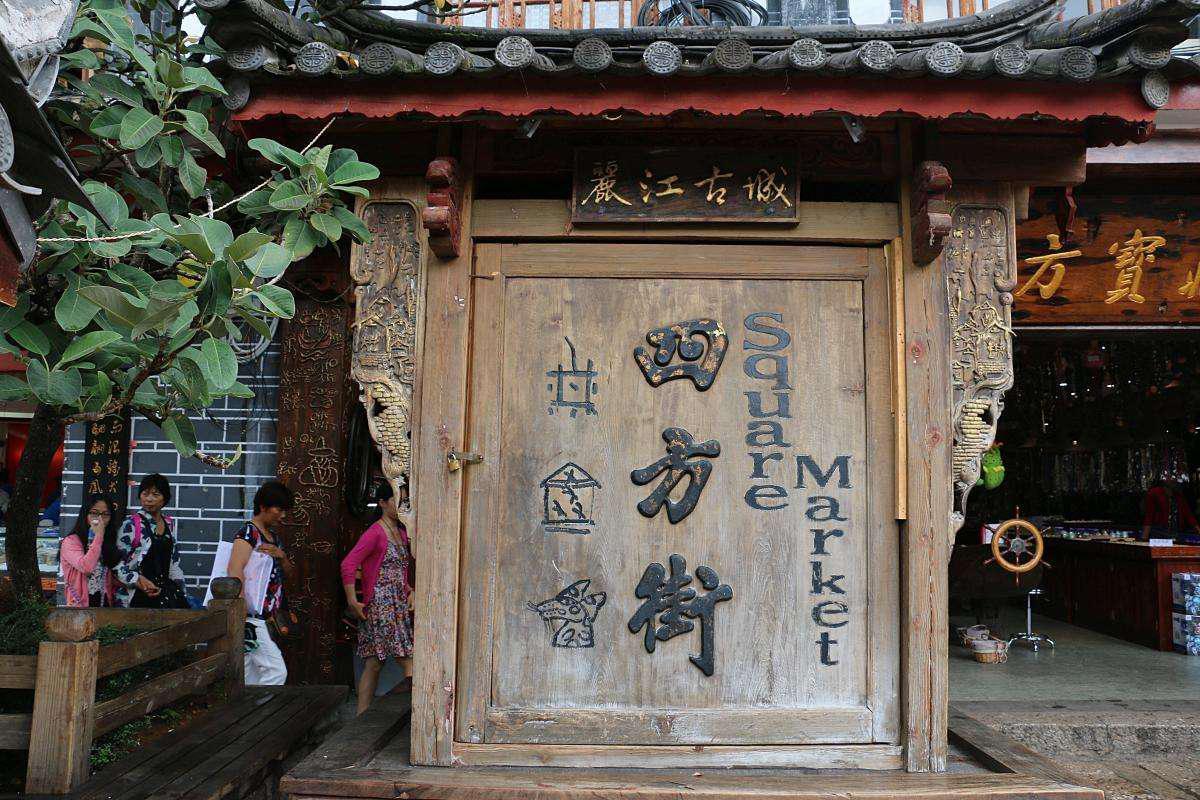
The central square of Lijiang Ancient City, square in shape, surrounded by streets on all sides, it is the most lively place in the ancient city. Once an important trading market on the Ancient Tea Horse Road, it remains the commercial and cultural center of the ancient city.
Formerly the mansion of the Mu clan chieftains of Lijiang, known as "Lijiang Forbidden City." The architecture combines Naxi, Han, and Bai ethnic styles, with a grand scale and rigorous layout, epitomizing the culture of Lijiang Ancient City.
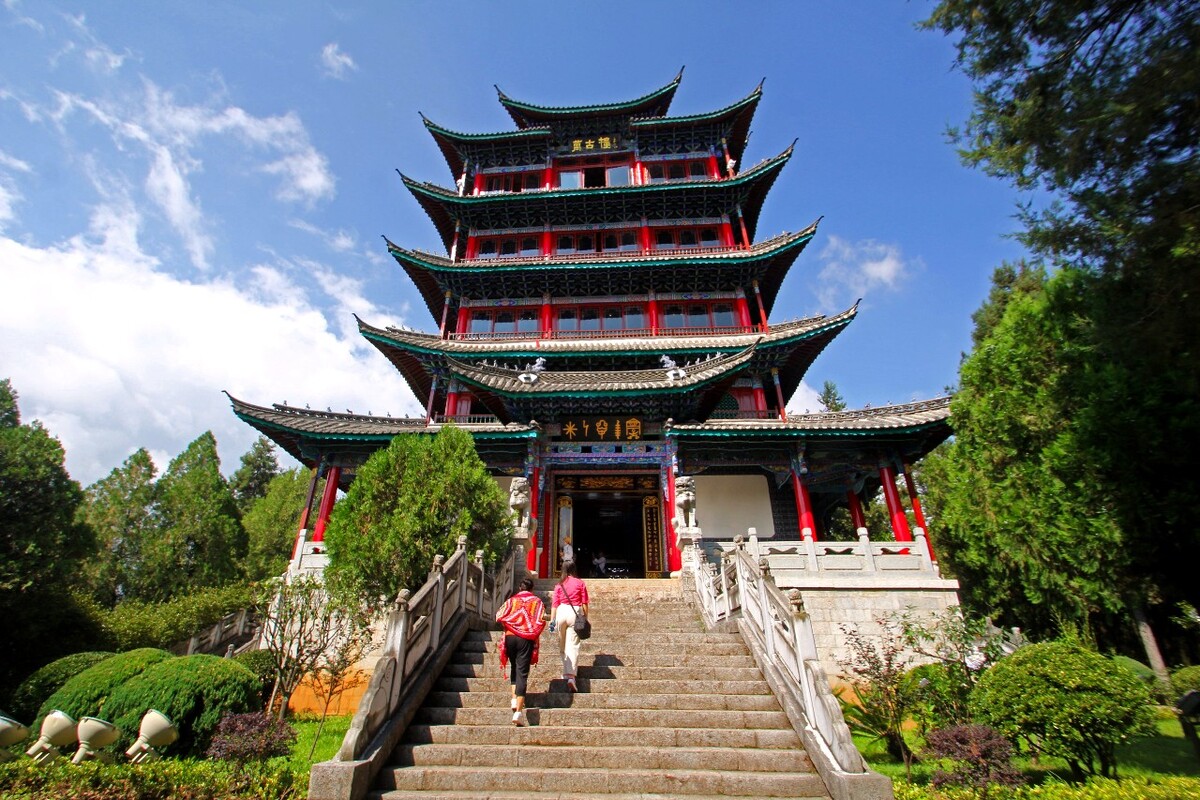
Located on Lion Hill, it is the highest point of Lijiang Ancient City. The tower stands 33 meters tall with five floors, featuring overhanging eaves and an imposing appearance, offering a 360-degree panoramic view of the entire ancient city and surrounding scenery.
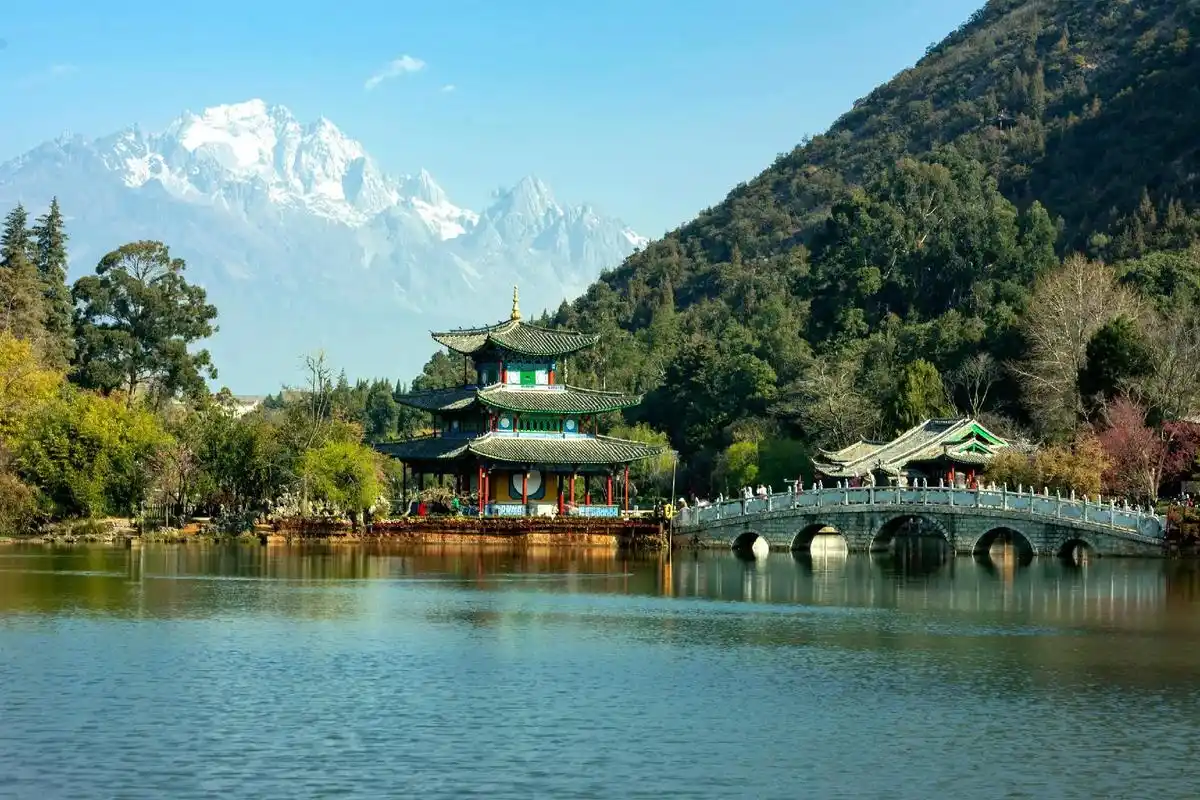
Located at the northern end of the ancient city, it is one of the water sources for Lijiang Ancient City. The park houses ancient buildings such as Wufeng Tower and Deyue Tower, with clear pond water reflecting the Jade Dragon Snow Mountain, creating a picturesque scene.
Dongba culture is the core of traditional Naxi culture, including Dongba writing, Dongba scriptures, Dongba painting, Dongba music, and Dongba dance:
The Naxi people of Lijiang have rich traditional art forms with unique ethnic styles:
Traditional pastry with sweet and salty flavors
Lijiang specialty hot pot with unique flavor
Traditional Naxi snack, sour and spicy
Traditional drink of Tibetan and Naxi people
| Open 24/7 | 24 hours |
| * Some attractions like Mu's Residence and Wangu Tower have separate opening hours | |
| Ancient City Maintenance Fee | ¥80/person |
| Mu's Residence | ¥60/person |
| Wangu Tower | ¥50/person |
| * Ancient City Maintenance Fee is valid for 7 days from payment | |
World Cultural Heritage (inscribed in 1997)
Founded in the late Song Dynasty and early Yuan Dynasty (late 13th century)
Approximately 2,400 meters
7.279 square kilometers
Important carrier of Naxi culture, important hub on the Ancient Tea Horse Road
Jade Dragon Snow Mountain, Shuhe Ancient Town, Lashi Lake, Tiger Leaping Gorge
0888-5111118
A living cultural heritage where residents still live and maintain traditional lifestyles
Once an important trade hub on the Ancient Tea Horse Road, promoting multi-ethnic cultural exchange
Han, Naxi, Tibetan, Bai and other ethnic cultures blend here, forming a unique culture
An important inheritance place for Dongba culture, preserving rich intangible cultural heritage
Reflects the wisdom of harmonious coexistence between humans and nature in ancient city construction